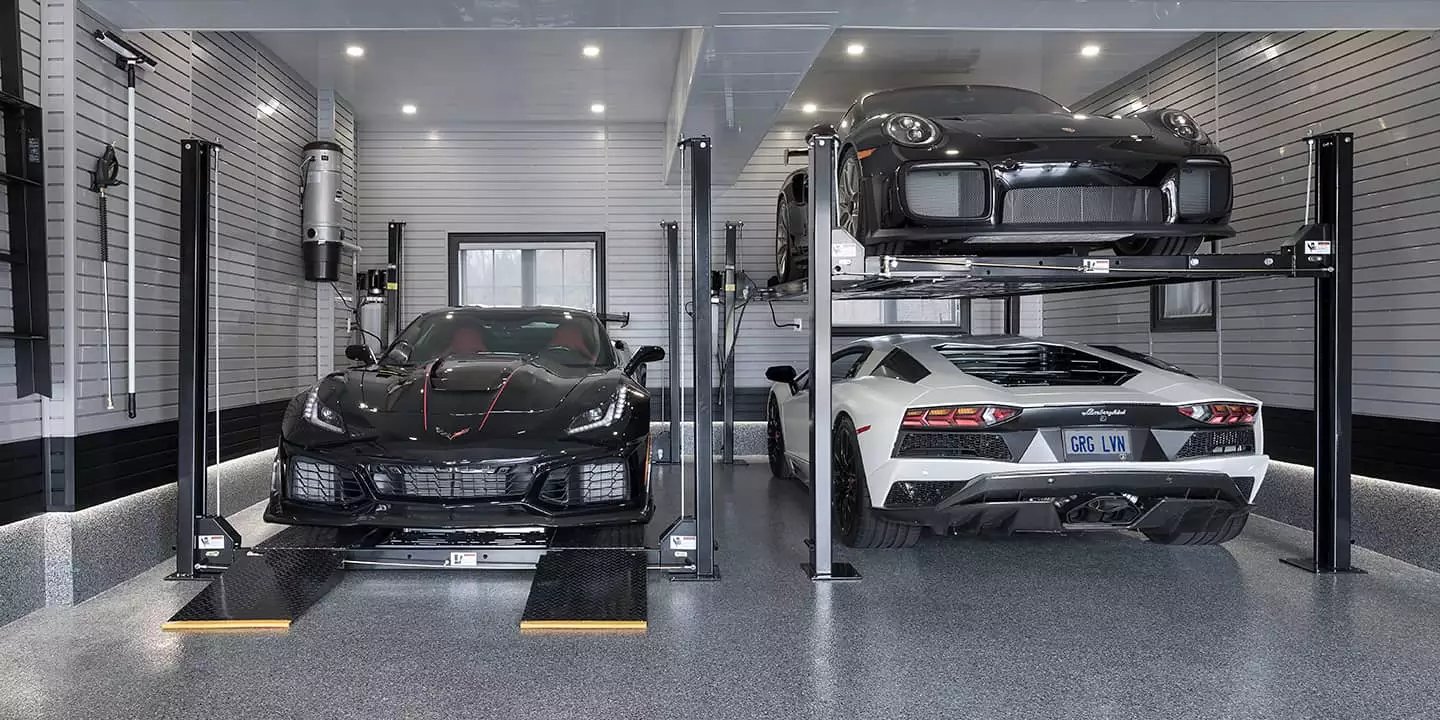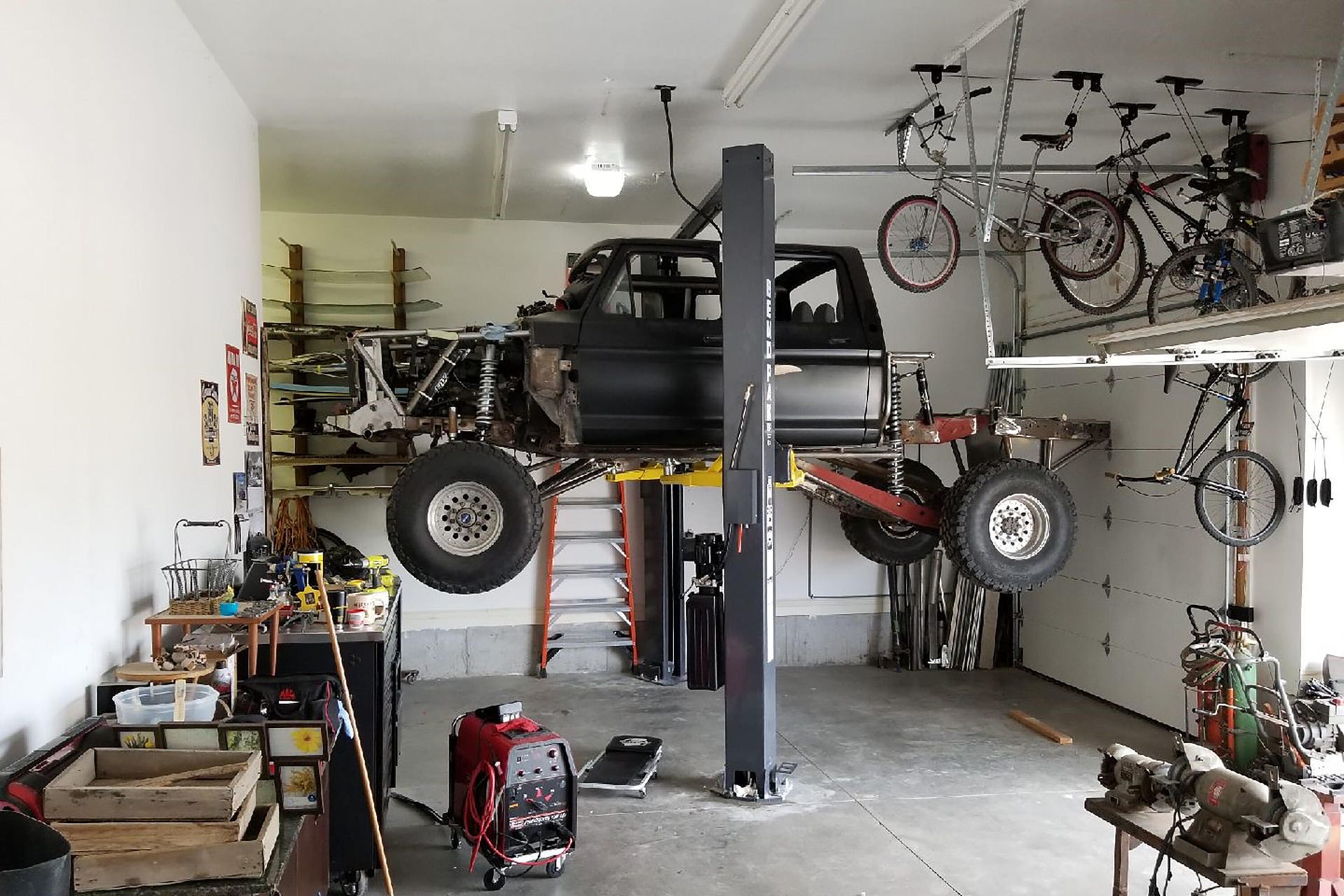Is a Home Car Lift Worth the Money?
Every auto repair shop has a car lift. It's an essential tool for a professional mechanic, making car maintenance and repairs easier, faster and safer.
But does a car lift make sense for a DIYer's home garage? The answer depends on a variety of factors, including your garage setup, how often you work on your car and, of course, your budget.
We'll explore each of these factors and more to help you decide whether a home car lift is worth your investment.

What To Consider Before Purchase
Before you spring for a home car lift there are three very important factors to consider.
- It’s crucial to ensure the lift you buy is capable of safely lifting the weight of your car or truck. Check the lift’s weight capacity and make sure it exceeds your vehicle’s curb weight.
- Make sure your garage is up to the task. Its size and configuration will have a major impact on the type of lift you choose – or whether a lift makes sense at all.
- Review your garage’s electrical capacity. Some larger lifts require a dedicated 220V circuit. If your garage isn’t equipped for this, you may need to consider the cost and logistics of an electrical upgrade.
Three Types of Car Lifts
Let’s take a look at the three most common types of car lifts and how they operate.
- Tow-Post Lift: Two-post lifts raise the vehicle using hydraulic posts, each equipped with adjustable arms that extend under the car to its designated jacking points. This design provides full access to the car’s undercarriage and suspension, making it the most common choice for professional mechanics. Consideration: positioning a vehicle correctly on two-post lifts can be challenging and they have the most rigorous installation requirements.
- Four-Post Lift: Four-post lifts consist of two metal platforms (or "runways") supported by hydraulic posts positioned at each corner. To lift the car, you simply drive it onto the runways and raise them. The process is inherently easy and stable since the car continues to rest on its wheels. This makes a four-post lift popular for novice users as well as for long-term car storage. Consideration: you'll need to add a bridge jack for jobs that require removing the wheels, such as brake or suspension work.
- Scissor Lift: Scissor lifts are good if you have space limitations. Named for the scissor-like mechanism that raises the vehicle, they are compact and portable, making them viable for garages with lower ceiling heights and for rented spaces. Consideration: scissor lifts generally don’t raise cars as high as two-post or four-post lifts.
Installation Requirements
Start by measuring the available space, including the ceiling height. Two-post and four-post lifts typically require a height of at least 10 to 12 feet. Make sure to account for any obstructions that could get in the way, such as garage door tracks or openers.
Next, assess the strength of your garage floor. Most lifts require a concrete slab that’s at least four inches thick and rated at a minimum of 3,000 PSI. Two-post lifts have the most stringent requirements. With only two contact points, they must be anchored securely into the concrete and typically require reinforced footers. If you’re unsure whether your floor is sturdy enough, either pick another option or get a professional evaluation.
Costs to Consider
The cost of a car lift varies widely depending on the type and quality. A basic scissor lift might set you back around $1,000, while a more robust two-post or four-post lift can range from $2,000 to $4,000 and higher, especially for premium models with extra features or higher weight capacities.
Depending on your setup, you might also need to factor in the cost of professional installation and the possible floor reinforcements, which can add up to thousands of dollars, depending on the complexity of the required modifications. Also, don’t forget to account for extras like shipping fees and accessories, such as drip trays or bridge jacks.
So, Is a Home Car Lift Really Worth It?
In the end, whether a home car lift is worth the money comes down to how much you’ll use it.
During these calculations consider the wider range of auto repair and maintenance work you'll be able to tackle on your own. A lift makes it far easier to handle major repairs like a transmission swap. Doing a few big jobs yourself can easily pay back the cost of the lift.
Plus, the convenience of having a lift at home means you’ll tackle more routine maintenance jobs yourself, and those savings will also add up over time.
Spending thousands on a home car lift isn't something to take lightly. But when you weigh the costs against the benefits, it can be a smart investment for most DIYers.

Still have questions? Speak to one of our Tinker Experts today!




